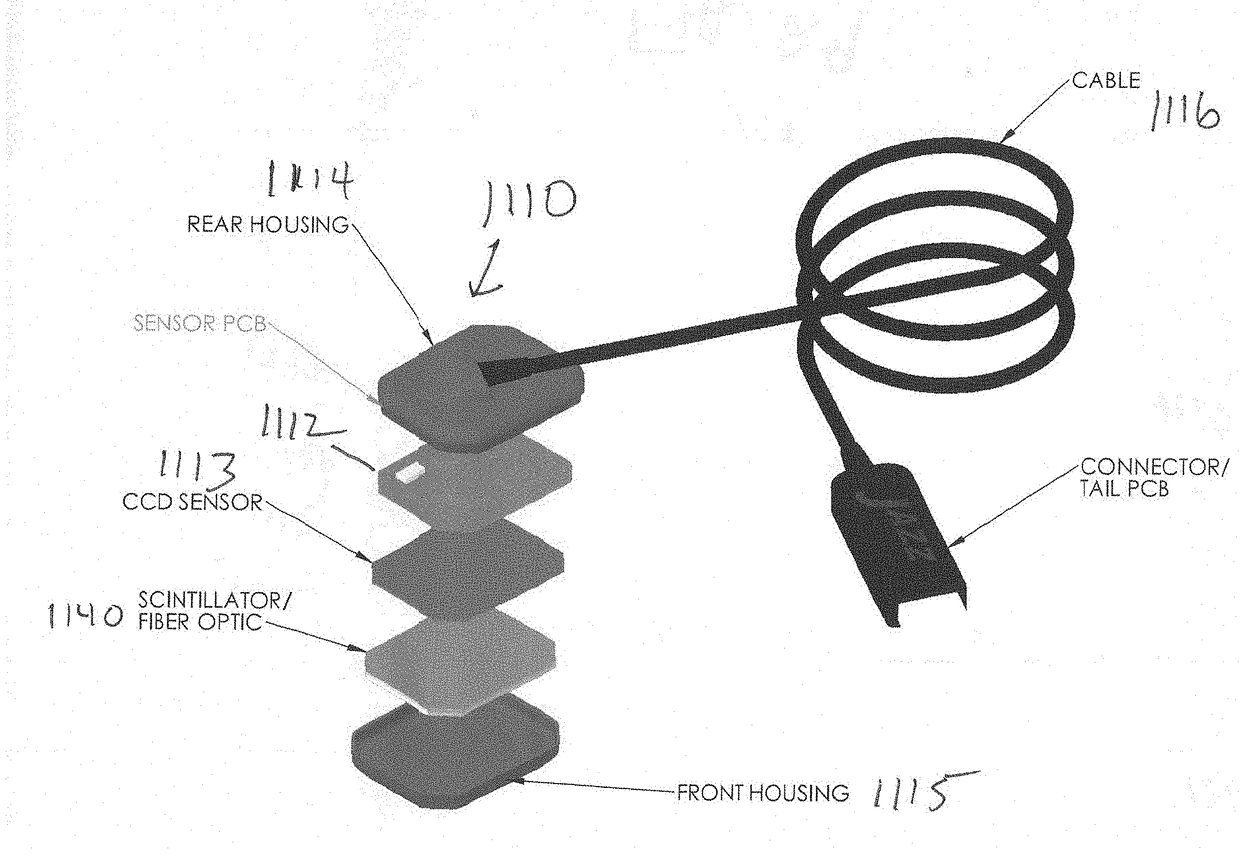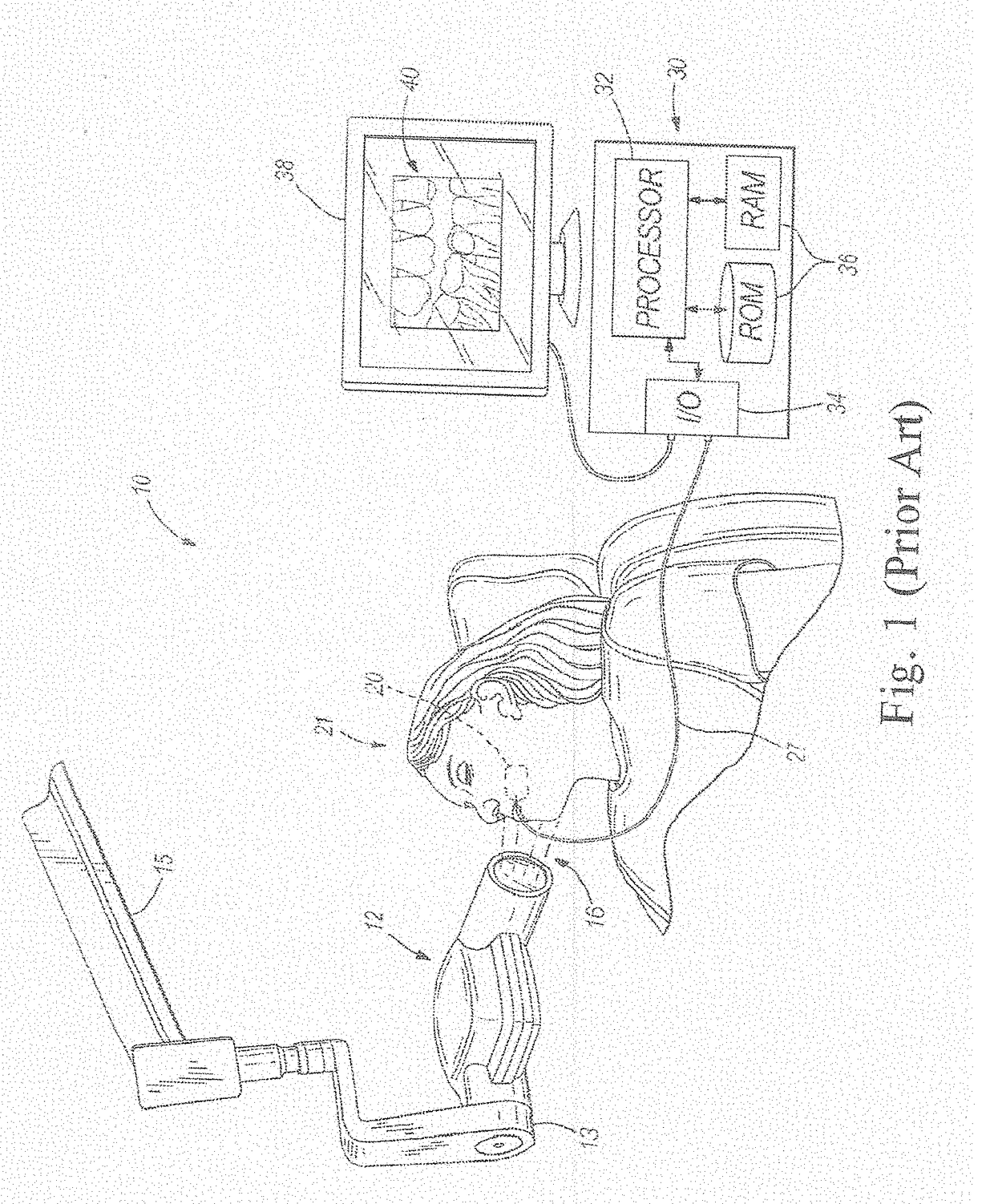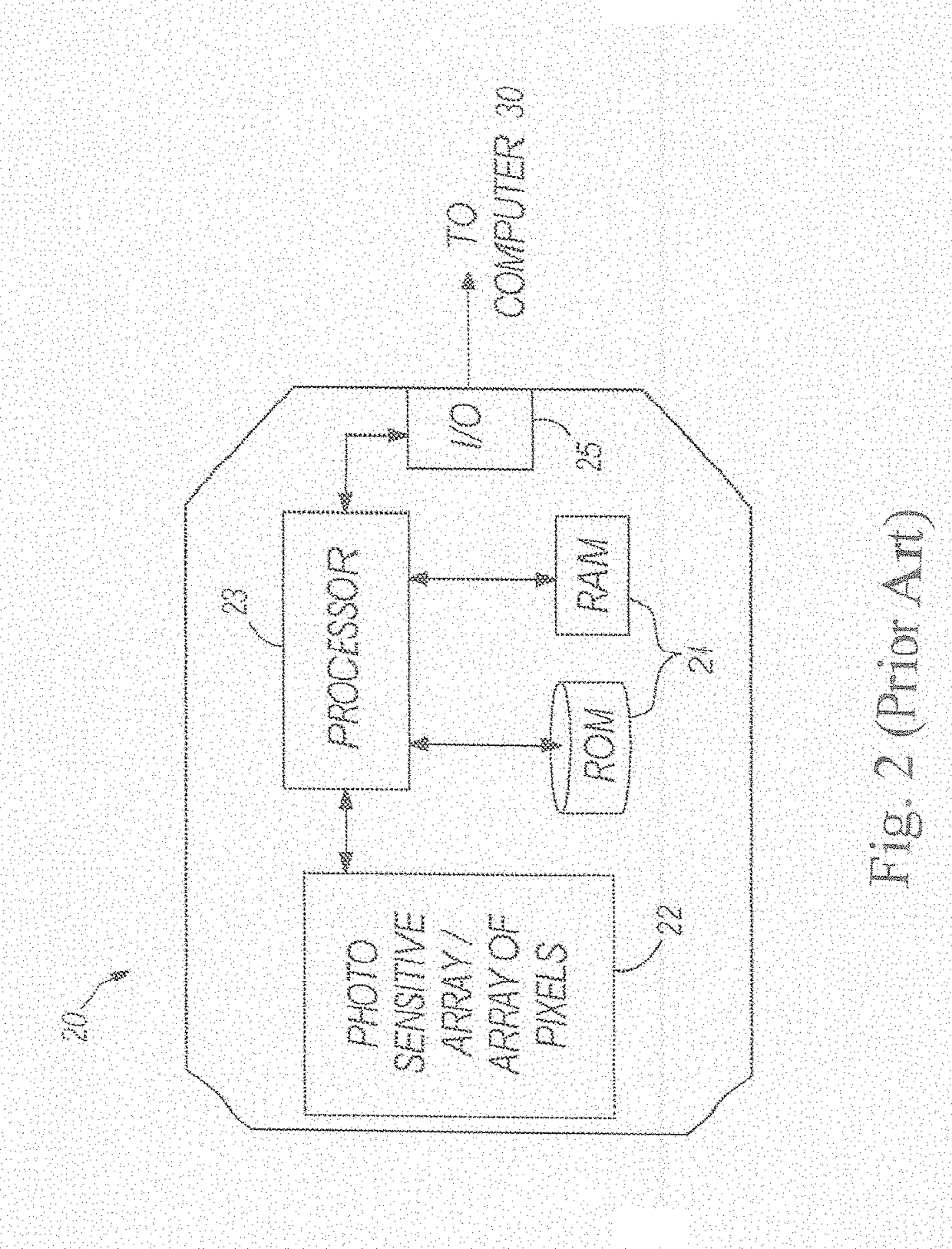Intraoral Dental Radiological Imaging Sensor
a radiographic imaging and sensor technology, applied in the field of intraoral dental radiographic imaging sensors, can solve the problems of patient discomfort, even greater patient discomfort problem for these sensors, and large space constraints, and achieve the effect of minimizing the dead spa
- Summary
- Abstract
- Description
- Claims
- Application Information
AI Technical Summary
Benefits of technology
Problems solved by technology
Method used
Image
Examples
Embodiment Construction
[0072]Referring to FIG. 25 a first intraoral x-ray imaging sensor 1110 includes a housing 1111, an electronic interface substrate 1112 and a semiconductor imager 1113. The housing 1111 has a rear (top) portion 1114 and a front (bottom) portion 1115. The first intraoral x-ray imaging sensor 1110 also includes a data cable 1116 and a cable connecter 1117 which mechanically couples the data cable 1116 to the top portion 1114 of the housing 1111 and electrically couples the data cable 1116 to the electronic interface substrate 1112. The data cable 1116 may be a USB cable with a USB connector 1118. The first intraoral x-ray imaging sensor 1110 may alternatively include a wireless transmitter which is mechanically and electrically coupled to the electronic interface substrate 1112.
[0073]Referring to FIG. 26 in conjunction with FIG. 25 the electronic interface substrate 1112 has a first surface 1119 and second surface 1120 and is substantially rectangular with a mesial end 1121 and a dista...
PUM
 Login to View More
Login to View More Abstract
Description
Claims
Application Information
 Login to View More
Login to View More - R&D
- Intellectual Property
- Life Sciences
- Materials
- Tech Scout
- Unparalleled Data Quality
- Higher Quality Content
- 60% Fewer Hallucinations
Browse by: Latest US Patents, China's latest patents, Technical Efficacy Thesaurus, Application Domain, Technology Topic, Popular Technical Reports.
© 2025 PatSnap. All rights reserved.Legal|Privacy policy|Modern Slavery Act Transparency Statement|Sitemap|About US| Contact US: help@patsnap.com



